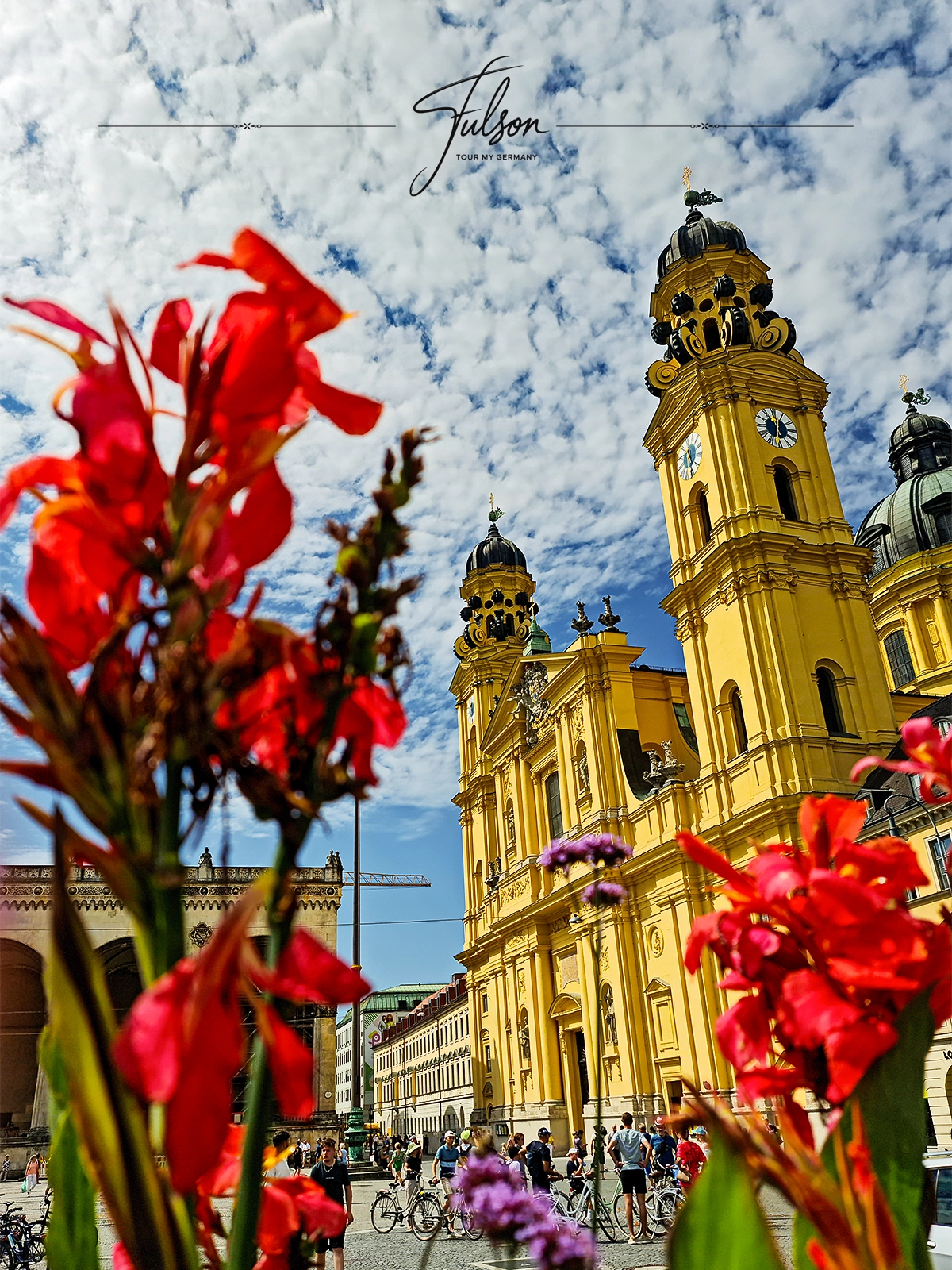- Home
- Top German Cities To Visit
- Munich Photo Gallery
- Theatinerkirche Munich
Theatinerkirche—Munich’s Beautiful Yellow Landmark
By: Eran Fulson / Traveler & Blogger / After 15+ years of travel across North America and Europe, I now help travelers experience Germany beyond the guidebooks with firsthand tips and cultural insights.
About the Photo
I'm a sucker for a bit of photographic color, even if my wardrobe leans heavily into earthy tones and 50 shades of black. This vibrant shot of Theatinerkirche captures its striking yellow Baroque facade, framed by red and purple flowers in the foreground, with Munich’s Odeonsplatz bustling in the background.
The Theatine Church of St. Cajetan is one of Munich’s most distinctive landmarks, with its ornate twin towers and intricate Rococo interior. From a practical point of view, and speaking from personal experience, the tower's height and color make this an excellent way to help navigate one's way through Munich. A sort of North Star point of reference.
Built in the 17th century, Theatinerkirche was inspired by Italian Baroque architecture, bringing a unique Mediterranean flair to Munich.
Historical Significance
- Commissioned in 1663 by Elector Ferdinand Maria as a thank-you for the birth of his heir, Prince Max Emanuel.
- Designed in the Italian Baroque style, inspired by the Sant’Andrea della Valle church in Rome.
- The bright yellow facade was added much later in the 18th century, making it one of Munich’s most recognizable buildings.
- Houses the royal tombs of the Bavarian Wittelsbach family.
How to Visit Theatinerkirche
- Location: Odeonsplatz, Munich
- Opening Hours: Typically open daily, 9 AM – 7 PM
- Closest Transport: U-Bahn: Odeonsplatz
- Entry Fee: Free (donations welcome)
Tip: Don’t miss the stunning white Rococo interior—a striking contrast to its bold yellow exterior!
Want More Amazing Locations in Munich?
Munich offers a plethora of unique attractions that showcase its rich history and vibrant culture. The nearby Munich Residenz, once the royal palace of Bavarian monarchs, now serves as a museum displaying exquisite architecture and art collections.
The sprawling English Garden provides a serene escape with its lush landscapes and the iconic Chinese Tower beer garden. These are just a few of the many remarkable sites awaiting you in Munich.
Why is Theatinerkirche in Munich yellow?
Why is Theatinerkirche in Munich yellow?
The church was originally built in plain stone, but the iconic yellow facade was added later to enhance its Baroque style and match Munich’s architectural aesthetic.
Can you go inside Theatinerkirche?
Can you go inside Theatinerkirche?
Yes! Theatinerkirche is open to visitors, and entry is free. The Rococo-style white interior is breathtaking, featuring intricate stucco decorations and a peaceful atmosphere.
What makes Theatinerkirche unique compared to other Munich churches?
What makes Theatinerkirche unique compared to other Munich churches?
- Italian Baroque design makes it stand out from Munich’s more Gothic and Romanesque churches.
- The vivid yellow color is rare for churches in Germany.
- It serves as the final resting place for many members of the Bavarian Wittelsbach royal family.

